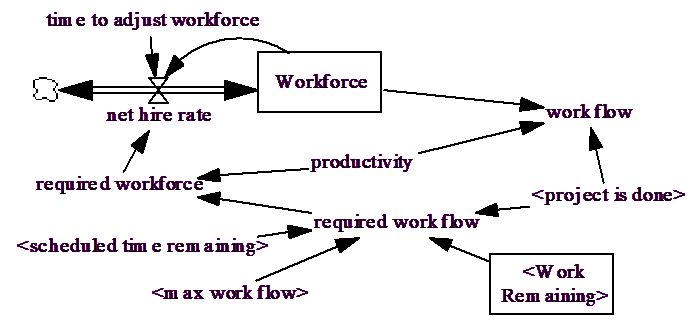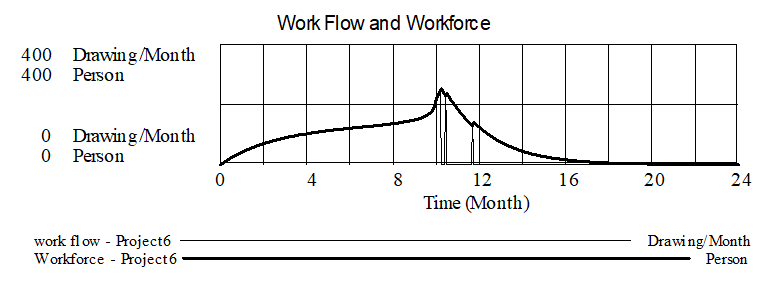So far we have treated work flow as whatever is necessary to get the work done, subject to limitations. In order to get work done, however, resources are necessary. In this model we are focusing on effort, and resources are people. Whether these people are hired for the job, or assigned internally within an organization, they are required to get the job done.
The simplest formulation for workforce is the same as that used in the Workforce-Inventory model. In this case the desired amount of production is that required to complete the project on time:

The formulation for required workflow has been changed so that it will go to 0 when the project is completed. The new and changed equations are:
net hire rate = (required workforce - Workforce)/time to adjust workforce
Units: Person/Month
Productivity = 1
Drawing/Person/Month
| required work flow =IF THEN ELSE(project is done,0, |
| XIDZ(Work Remaining,scheduled time remaining,max work flow)) |
Units: Drawing/Month
required workforce = required workflow/productivity
Units: Person
time to adjust workforce = 2
Units: Month
| Workforce = INTEG( |
| net hire rate, |
| 0) |
Units: Person
The project starts off without anyone working on it, and people are brought on relatively quickly to get the work done. This is the most straightforward view of labor requirements and acquisition. It would also be possible to use a planned work intensity profile, involving a gentle ramp up of effort at the beginning and a ramp down at the end.
The model modified in this way produces:

Workforce quickly climbs to 100 people, then climbs slowly until it starts a dramatic increase near the end of the project. There is also a resurgence of project activity after the end of the project, we deal with both of these unrealistic behaviors together.